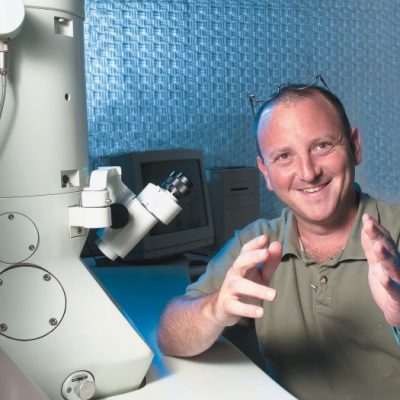 The OSU Institute for Materials Research Distinguished Lecturer Series continues with a lecture given by Wayne D. Kaplan from the Technion – Israel Institute of Technology. The talk is titled “The Influence of Fields and Dopants on Grain Boundary Mobility”. It will take place in Scott Lab E100, 201 W. 19th Ave, on October 12, 2017 from 2 p.m. – 3 p.m., with light refreshments to follow
The OSU Institute for Materials Research Distinguished Lecturer Series continues with a lecture given by Wayne D. Kaplan from the Technion – Israel Institute of Technology. The talk is titled “The Influence of Fields and Dopants on Grain Boundary Mobility”. It will take place in Scott Lab E100, 201 W. 19th Ave, on October 12, 2017 from 2 p.m. – 3 p.m., with light refreshments to follow
Bio
Wayne D. Kaplan is a full professor in the Department of Materials Science and Engineering at the Technion – Israel Institute of Technology, where he holds the Karl Stoll Chair in Advanced Materials. Kaplan currently serves as the Executive Vice President for Research at the Technion. He completed his BSc in Mechanical Engineering, and his MSc and DSc in Materials at the Technion after immigrating to Israel from the U.S. He then spent a year as a Humboldt Fellow at the Max-Planck Institute in Stuttgart Germany before joining the Technion faculty in 1995.
During the past 20 years Kaplan’s research activities at the Technion have focused on the structure, chemistry and energy of interfaces between metals and ceramics, with a focus on the correlation between thermodynamics (continuum) approaches and the atomistic structure and chemistry of interfaces. In addition to his fundamental research in materials science, Kaplan works on the development of electron microscopy techniques for characterization at the sub-nanometer length-scale.
Kaplan is the author of more than 130 reviewed and archived scientific articles, as well as two textbooks: Joining Processes and Microstructural Characterization of Materials. In 2006 he received the Henry Taub Prize for Academic Excellence. He is a fellow of the American Ceramic Society, a member of the Israel Microscopy Society, and was an editor of the Journal of Materials Science (Springer).
Abstract
Controlling grain size is a fundamental part of Materials Science and Engineering. While the driving force for grain growth is thought to be understood, the mechanism by which grain boundaries migrate, and how microscopic parameters affect grain boundary mobility, are less understood. This presentation focuses on the mobility of grain boundaries and how dopants and external fields influence the kinetics of grain growth.
The first part of the talk will address the concept of solute-drag, where conventional wisdom indicates that moving a solute cloud with a grain boundary should either slow down grain boundary motion (e.g. Mg in Al2O3), or not affect it. Model experiments at dopant levels below the experimentally determined solubility limit clearly show that some adsorbates reduce grain boundary mobility (the accepted solute-drag effect) whereas other increase grain boundary mobility (solute-acceleration). Reasons for the varying behavior are discussed within the framework of grain boundary disconnections as the mechanism by which grain boundaries move, and current approaches to understanding Gibbsian adsorption.
The second part of the talk reviews model experiments designed to probe the influence of external fields on grain boundary mobility. As a model system, polycrystalline SiC underwent conventional annealing, and annealing using spark plasma sintering (SPS) without pressure, and the grain size as a function of annealing time was characterized. From these experiments, the grain boundary mobility of SiC at 2100°C under conventional versus SPS annealing was determined. SPS annealing resulted in a grain boundary mobility which is three orders of magnitude larger than that resulting from conventional annealing. This indicates that the same (or similar) mechanism which promotes rapid sintering during SPS also significantly increases the rate of grain growth. This mechanism will be discussed in light of the “solute-acceleration” effect presented in the first part of the talk.
Each year, the Institute for Materials Research Distinguished Lecture Series brings world renowned materials researchers to The Ohio State University campus to share the latest developments in materials-allied fields and discuss their research with OSU students, faculty, and staff. IMR Distinguished Lecturers include the top scientists in their fields, and these lectures are advertised via campus mail, IMR listservers and IMR’s website. For more information on past lectures, visit our Distinguished Lectures page.
